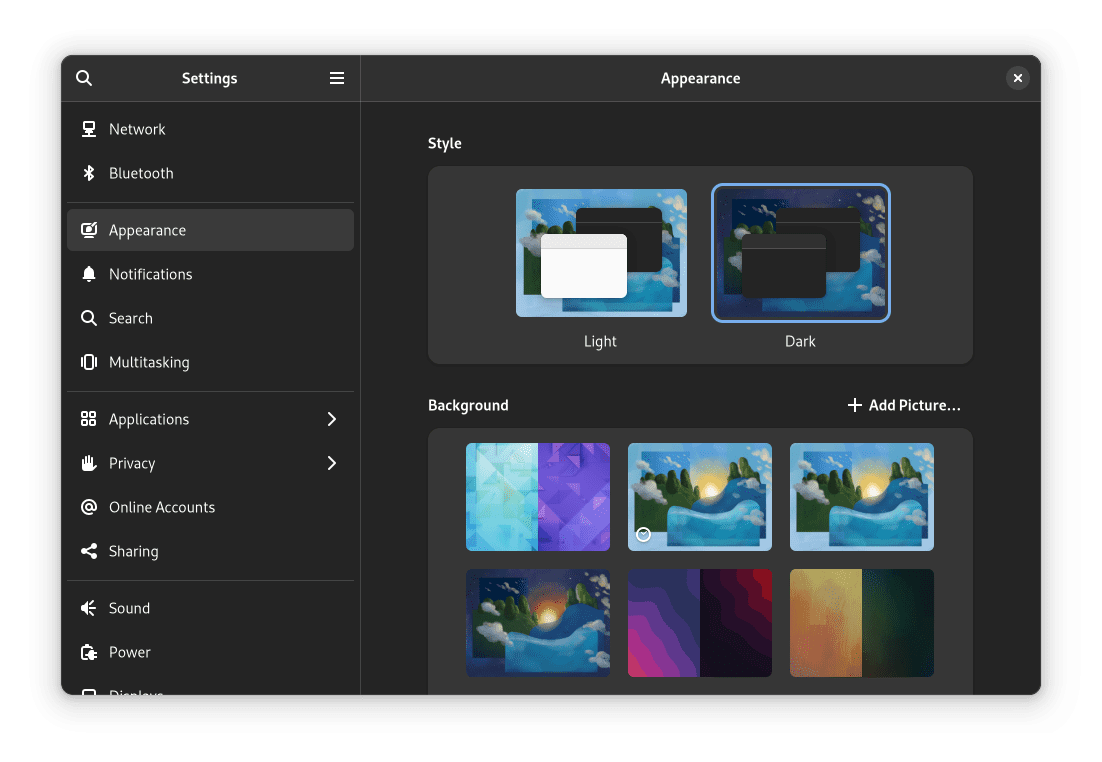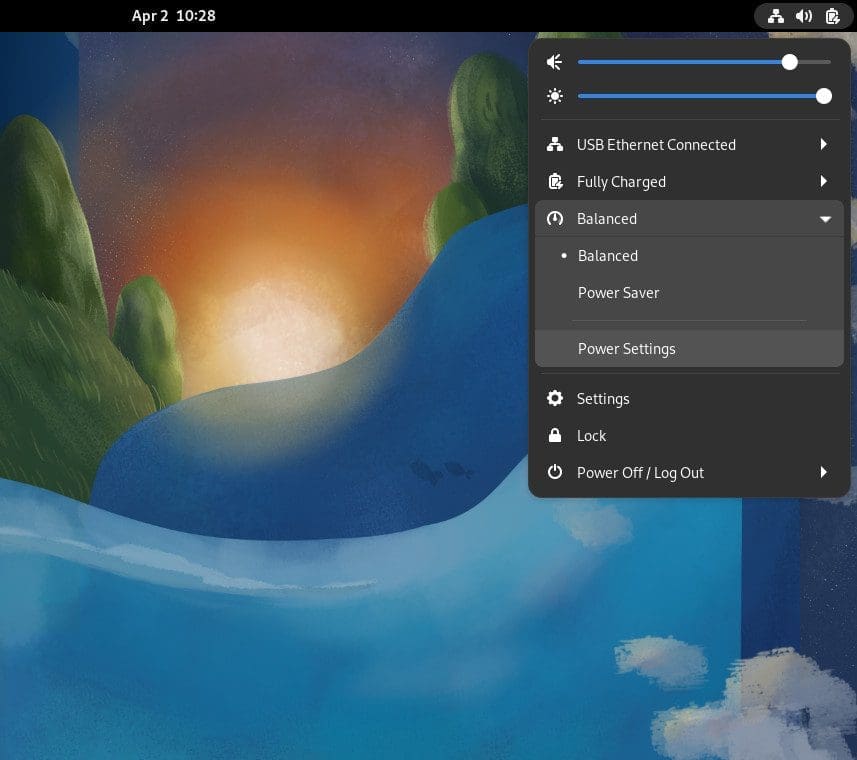GNOME 42 has landed. GNOME is one of the most used desktop environments, and a new release with so many new features is excellent news. GNOME has recently been focusing on the consistency of its interface and a smoother intuitive experience for its users (especially laptop users).
This release brings upgrades, UI changes, improvements under the hood, and even new applications. Let us see what the significant changes to the system are.
New features in GNOME 42
1. Appearance
With GNOME 41, GNOME had adapted Libadwaita. Simply put, GNOME used the GTK library to create the graphical interface of their applications. This posed a couple of problems, though. GTK library is shared by a couple more desktop environments, like Budgie, Xfce, Cinnamon, etc. This created problems in making an application that was consistent with other GNOME applications, specifically. Also, if they had to make any changes to the UI of GNOME, they had to make changes to the GTK library, which in turn affected the other desktop environments that use it.
In response to this, GNOME created Libadwaita, which is like their own version of GTK. They can make whatever changes they want to make there, and it will be isolated to GNOME only. This also allows them to create applications that look more consistent with each other.
The adaptation of Libadwaita was controversial. This is because theming is no longer possible in GNOME. Many developers say that that problem won’t exist for a long time because Libadwaita is still in its very early stages. It does offer a better-looking interface of the system overall, but theming is a crucial part of the personalization of the desktop.
Dark Theme
Most important of all the appearance changes, GNOME now has a system-wide dark theme that can be switched easily by using the settings. Previously, users had to install GNOME Tweaks to change the theme. Also, there is a dark and light variation of all the wallpapers preloaded with the dark theme.

GNOME Dark Theme
GNOME Shell Theme
The theme for the GNOME top bar has also seen some minute but impactful changes. The buttons and menus are flatter, making it look more modern. The selected option gets highlighted with quite a bit of padding around, contributing to a modern look. The menus use significantly lesser space than before.

GNOME Shell Theme
Also updated are the on-screen bubbles (that are prompted when volume or brightness is changed). They are much smaller and lesser distracting than before.
2. App Updates
The major update to existing apps is that many have been ported to the GTK4 framework. This comes back around to Libadwaita. To be able to use Libadwaita, an app has to be made using GTK4. Many apps have been, but some haven’t been moved to GTK4, creating inconsistencies that people have spoken out about. It is a work in progress. The updated apps feature more rounded corners and flatter button designs.
Screenshot
GNOME has introduced an all-new screenshot feature. It no longer only supports images but also has the capability of recording videos. The interface appears on the screen like a bubble and not a window, with the options of recording a selected area, a whole window, or the full screen. Just below that, it also offers the option between a video and a photo. This is a great improvement because the screenshot tool no longer has a whole window, making it seem more like a feature than an application itself.
All of this with just one press of the PrtSc key.

GNOME Screenshot Tool
3. New Apps
There have been introductions of two new apps. The common theme is that they want the applications to be as simple as possible. Many options have been hidden or eliminated from their earlier versions for simplicity. One can see why they might want to do so, but this decision hasn’t been agreeable by everyone.
Console
GNOME has introduced a new terminal app called Console. The app is definitely in very early stages, though. The Console window is translucent, but there is no way of making it opaque. There are the usual search and new tab options on the top bar, and the settings hold nothing but light/dark theme and font size options. For now, it’s safe to say that the predecessor GNOME Terminal will stay as the main terminal application. The upcoming Fedora 36 also features GNOME Terminal instead of Console for the moment.

GNOME Console and Terminal
Text Editor
GNOME has introduced a new text editor named Text Editor. With the first look at it, you will tell that it takes a lot from its predecessor Gedit. But again, trailing on the topic of simplicity, it provides a very minimal interface, and the provided settings are laid out attractively.
The quick menu settings include only the important: line numbering toggle, indentation settings, spell check, text wrapping, and light/dark theming. But the Preferences window has more settings like changing the color scheme, custom font, margin limits, etc.

GNOME Text Editor
4. Developer Friendly Updates
With the whole Libadwaita process, GNOME had made clear that they are trying to make the project more developer-friendly. GNOME has even released an IDE called GNOME Builder, which can work very well as a plain IDE, but it has special features to make it easier for developers to create apps for GNOME. More of the developer-centric updates can be read about here.
5. Performance Upgrades
There have been performance upgrades regarding the hardware acceleration on GNOME Web, the browser GNOME is developing, and the Videos app, which will work much more smoothly. Notably, input handling has also been improved significantly, resulting in lower latency been the hardware command and its effect on the system. This will be very useful for gamers and graphic applications.
Conclusion
GNOME has presented many updates on many levels this time, exciting news for the Linux desktop community. GNOME has been on a rapid development pace, taking risks all over the place ever since GNOME 40. Some changes are very welcome, while the community doesn’t desire others. But since this is the open-source community we are talking about, the people will get what they want no matter what. We hope that this article was enjoyable for you. Cheers!


3 comments
With other words, there have been some cosmetic changes already present in other desktop environments like Deepin. I don’t know what all the fuss is about? Blue folder icons (is that really a change???), dark global theme, screenshot app, text editor (in beta, by the way), terminal with transparent window and in alpha stage (???). I’m not saying Gnome is not going in the right direction UI wise, but the changes mentioned in this article are not enough to justify a major release.
Maybe because it’s at a state-of-the-art level.
The only thing I’m disappointed with, is that every new version breaks compatibility with lot of extensions.
I use some essentials like Gnome Menus and Places.
And one important that I don’t understand why it’is still not a native feature, the sound selector both for output and microphone.
When you have bluetooth headphones with microphone, webcam microphone, monitor speakers output via DP/HDMI, and PC jack to 2.1 speakers, and want to change on the fly with an easy menu, you need an extension like Sound output chooser.
If new Gnome version breaks compatibility with this extension, you have to search another one similar that still works.
Some days ago I updated to Gnome 42 but many of my extension were broken and the theme I installed had some issues as well.
I used the snap manager and immediately restored my system before the update
Now pamac tells me there are like 200+ updates but I’m too scared lol, won’t update until I know extensions and theme have been updated